-
 Bitcoin
Bitcoin $108,489.6704
1.13% -
 Ethereum
Ethereum $2,502.0528
2.92% -
 Tether USDt
Tether USDt $1.0002
0.00% -
 XRP
XRP $2.1941
0.51% -
 BNB
BNB $655.3375
1.00% -
 Solana
Solana $151.5977
1.27% -
 USDC
USDC $0.9999
0.00% -
 TRON
TRON $0.2768
0.32% -
 Dogecoin
Dogecoin $0.1676
2.86% -
 Cardano
Cardano $0.5675
0.98% -
 Hyperliquid
Hyperliquid $40.6109
7.48% -
 Bitcoin Cash
Bitcoin Cash $500.7746
2.09% -
 Sui
Sui $2.8328
2.03% -
 Chainlink
Chainlink $13.4452
1.26% -
 UNUS SED LEO
UNUS SED LEO $9.1623
0.39% -
 Avalanche
Avalanche $18.2267
2.24% -
 Stellar
Stellar $0.2382
0.00% -
 Toncoin
Toncoin $2.8885
1.68% -
 Shiba Inu
Shiba Inu $0.0...01159
0.91% -
 Litecoin
Litecoin $87.1827
0.88% -
 Hedera
Hedera $0.1511
2.90% -
 Monero
Monero $315.4992
-0.59% -
 Polkadot
Polkadot $3.4663
2.34% -
 Bitget Token
Bitget Token $4.6118
-0.65% -
 Dai
Dai $1.0000
-0.01% -
 Ethena USDe
Ethena USDe $1.0003
0.02% -
 Uniswap
Uniswap $7.2989
4.69% -
 Pepe
Pepe $0.0...01003
5.73% -
 Aave
Aave $275.5616
7.15% -
 Pi
Pi $0.5181
-2.49%
What is the tiered margin system of Coinbase contracts? Does the larger the position, the higher the margin requirement?
Coinbase's tiered margin system increases requirements as position sizes grow, ensuring traders have enough capital to cover potential losses during market volatility.
May 06, 2025 at 11:21 pm

Coinbase, one of the leading cryptocurrency exchanges, offers a sophisticated trading platform that includes futures and perpetual contracts. One of the key features of their trading system is the tiered margin system, which affects how traders manage their positions and their risk. In this article, we will delve into the specifics of Coinbase's tiered margin system for contracts and explore whether larger positions lead to higher margin requirements.
Understanding Margin in Cryptocurrency Trading
Margin is a critical concept in cryptocurrency trading, especially when dealing with futures and perpetual contracts. It refers to the amount of capital that traders must hold in their account to open and maintain a position. Margin acts as a form of collateral to cover potential losses, and its requirements can vary based on the size and type of the position.
What is a Tiered Margin System?
A tiered margin system is a method used by exchanges to adjust margin requirements based on the size of the position. The idea behind this system is to manage risk more effectively by requiring traders to hold more capital as their positions grow larger. This approach helps to mitigate the risk of significant market movements that could lead to substantial losses.
How Does Coinbase's Tiered Margin System Work?
Coinbase implements a tiered margin system for its futures and perpetual contracts. This system is designed to ensure that the exchange can manage risk appropriately while allowing traders to engage in leveraged trading. Here’s a breakdown of how it functions:
Position Size Tiers: Coinbase divides positions into different tiers based on their size. Each tier has a specific margin requirement. For instance, a smaller position might fall into a lower tier with a lower margin requirement, while a larger position would be in a higher tier with a higher margin requirement.
Margin Requirement Calculation: The margin requirement for a position is calculated based on the tier it falls into. If a trader's position grows and moves into a higher tier, the margin requirement will increase accordingly. This means that traders need to be aware of their position size and the corresponding margin requirements.
Dynamic Adjustments: Coinbase's system dynamically adjusts margin requirements based on market conditions. This means that during periods of high volatility, the margin requirements for all tiers might increase to protect the exchange and its users from excessive risk.
Does the Larger the Position, the Higher the Margin Requirement?
Yes, in Coinbase's tiered margin system, the larger the position, the higher the margin requirement. This is a fundamental aspect of the system designed to manage risk. As a position grows, it moves into higher tiers, each with a higher margin requirement. This ensures that traders have sufficient capital to cover potential losses as their exposure increases.
Example of Tiered Margin Requirements
To illustrate how this works, let's consider a hypothetical example of Coinbase's tiered margin system for a Bitcoin perpetual contract:
- Tier 1: Positions up to 1 BTC require a margin of 1% of the position value.
- Tier 2: Positions between 1 BTC and 5 BTC require a margin of 2% of the position value.
- Tier 3: Positions between 5 BTC and 10 BTC require a margin of 3% of the position value.
- Tier 4: Positions above 10 BTC require a margin of 4% of the position value.
In this example, if a trader holds a position of 3 BTC, they would fall into Tier 2 and need to maintain a margin of 2% of the position value. If the position grows to 6 BTC, it would move into Tier 3, and the margin requirement would increase to 3%.
Managing Margin Requirements on Coinbase
Traders need to be proactive in managing their margin requirements on Coinbase. Here are some steps to ensure compliance with the tiered margin system:
Monitor Position Size: Keep a close eye on the size of your positions. As they grow, they may move into higher tiers with increased margin requirements.
Maintain Adequate Capital: Ensure that your account has enough capital to meet the margin requirements of your positions. If your position moves into a higher tier, you may need to deposit additional funds.
Use Stop-Loss Orders: Implementing stop-loss orders can help manage risk and prevent positions from growing too large and moving into higher tiers with higher margin requirements.
Stay Informed: Keep up to date with any changes to Coinbase's margin requirements. The exchange may adjust these requirements based on market conditions, and staying informed can help you manage your positions effectively.
Impact of Market Volatility on Margin Requirements
Market volatility can significantly impact margin requirements in Coinbase's tiered margin system. During periods of high volatility, the exchange may increase margin requirements across all tiers to protect against the increased risk of large price movements. Traders need to be prepared for these adjustments and ensure they have sufficient capital to meet the new requirements.
Practical Example of Margin Adjustment
Let's consider a practical example to understand how margin requirements might change during a volatile market period:
Initial Margin Requirement: A trader holds a position of 2 BTC, which falls into Tier 2 with a margin requirement of 2%.
Market Volatility Increases: Due to increased market volatility, Coinbase raises the margin requirement for Tier 2 to 3%.
Trader's Action: The trader must now deposit additional funds to meet the new margin requirement of 3% for their 2 BTC position. Failure to do so could result in the position being liquidated.
Frequently Asked Questions
Q1: Can I reduce my margin requirement by reducing my position size?
Yes, reducing your position size can move it into a lower tier with a lower margin requirement. If you are in Tier 3 and reduce your position to fall into Tier 2, your margin requirement will decrease accordingly.
Q2: What happens if I fail to meet the increased margin requirement due to market volatility?
If you fail to meet the increased margin requirement, Coinbase may liquidate your position to cover the shortfall. It's crucial to monitor your positions and maintain adequate capital to avoid forced liquidation.
Q3: How often does Coinbase adjust its margin requirements?
Coinbase may adjust its margin requirements based on market conditions. These adjustments can occur at any time, so it's important to stay informed and monitor your positions closely.
Q4: Can I use different types of collateral to meet margin requirements on Coinbase?
Coinbase typically requires margin to be held in the same cryptocurrency as the contract. However, it's essential to check the specific requirements for each type of contract, as they may vary.
Disclaimer:info@kdj.com
The information provided is not trading advice. kdj.com does not assume any responsibility for any investments made based on the information provided in this article. Cryptocurrencies are highly volatile and it is highly recommended that you invest with caution after thorough research!
If you believe that the content used on this website infringes your copyright, please contact us immediately (info@kdj.com) and we will delete it promptly.
- Ripple, Stablecoin, Adoption: RLUSD Leading the Charge
- 2025-06-30 14:30:12
- Bitcoin ETF, IBIT, and the Bull Flag: Is $144,000 on the Horizon?
- 2025-06-30 14:50:12
- Bitcoin, Passive Income, and a Bull Raise: Riding the Crypto Wave
- 2025-06-30 14:30:12
- Bitcoin, Personal Loans, and Omega 88: A New Era in Lending?
- 2025-06-30 15:09:14
- Saylor's Strategy: How MicroStrategy's Bitcoin Bet is Reshaping Finance
- 2025-06-30 14:52:14
- Metaplanet's Bitcoin Blitz: From Zero to Hero in the Corporate Treasury Race
- 2025-06-30 15:10:54
Related knowledge
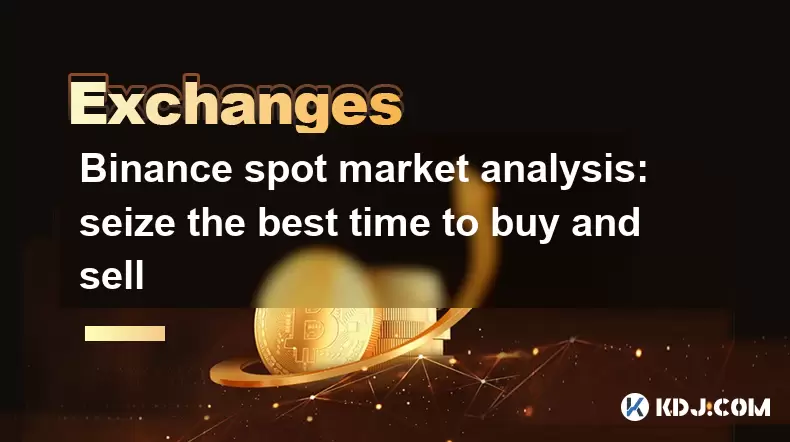
Binance spot market analysis: seize the best time to buy and sell
Jun 19,2025 at 04:56pm
Understanding the Binance Spot MarketThe Binance spot market is one of the most popular platforms for cryptocurrency trading globally. It allows users to trade digital assets at current market prices, making it essential for traders aiming to buy low and sell high. Unlike futures or margin trading, spot trading involves direct ownership of the asset aft...
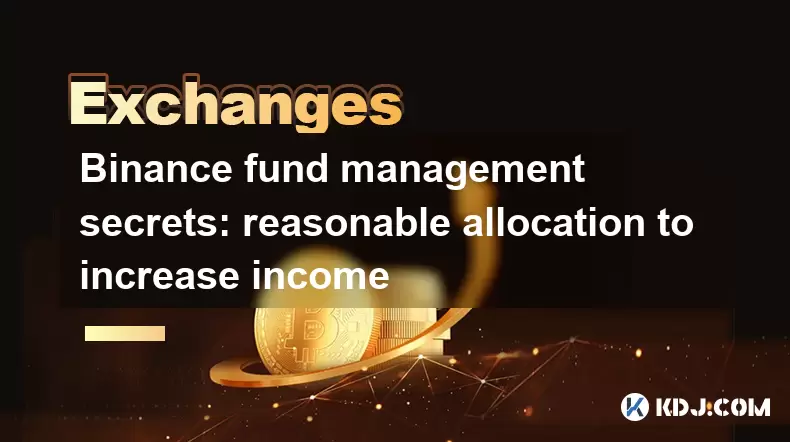
Binance fund management secrets: reasonable allocation to increase income
Jun 22,2025 at 02:29pm
Understanding Binance Fund ManagementBinance fund management involves strategic allocation of your cryptocurrency assets to optimize returns while managing risk. The key to successful fund management lies in understanding how different investment options on the Binance platform can be utilized to create a diversified portfolio. This includes spot tradin...
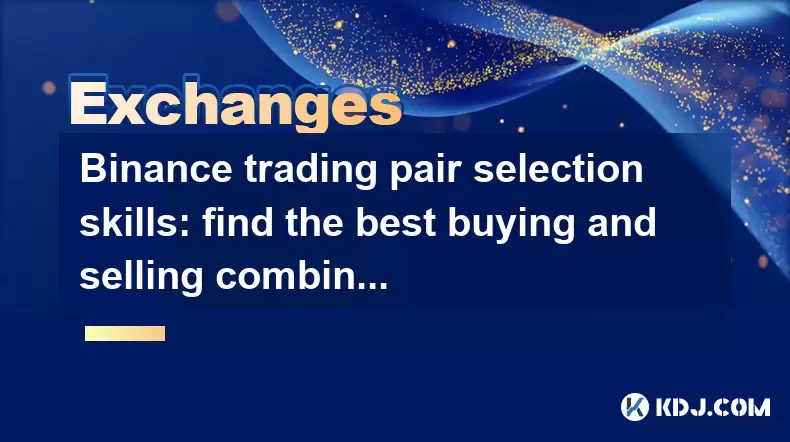
Binance trading pair selection skills: find the best buying and selling combination
Jun 23,2025 at 02:49am
Understanding the Basics of Trading Pairs on BinanceBefore diving into trading pair selection skills, it's essential to understand what a trading pair is. On Binance, a trading pair refers to two cryptocurrencies that can be traded against each other. For example, BTC/USDT means Bitcoin is being traded against Tether. Each trading pair has its own liqui...
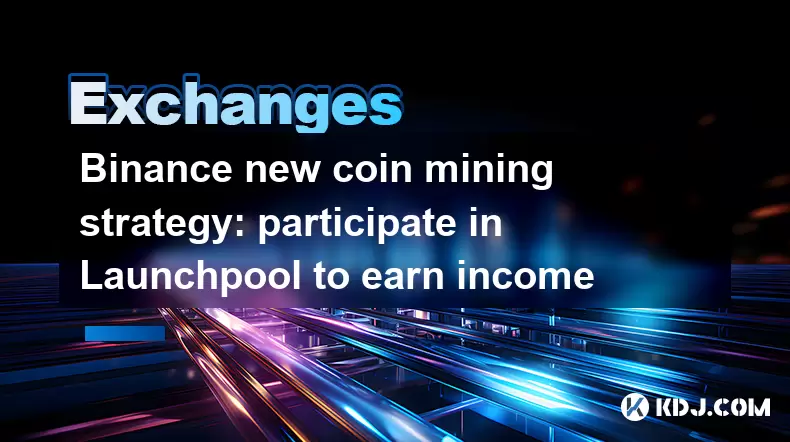
Binance new coin mining strategy: participate in Launchpool to earn income
Jun 23,2025 at 11:56am
What is Binance Launchpool and how does it work?Binance Launchpool is a feature introduced by the world’s largest cryptocurrency exchange, Binance, to allow users to earn new tokens through staking. This platform enables users to stake their existing cryptocurrencies (such as BNB, BUSD, or other supported assets) in exchange for newly launched tokens. T...
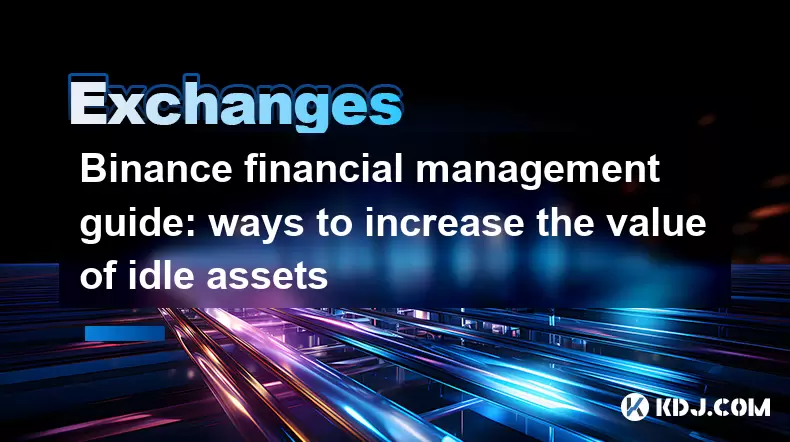
Binance financial management guide: ways to increase the value of idle assets
Jun 19,2025 at 11:22pm
Understanding Idle Assets in the Cryptocurrency SpaceIn the fast-paced world of cryptocurrency, idle assets refer to digital currencies that are not actively being used for trading, staking, or yield farming. Holding these funds in a wallet without utilizing them means missing out on potential growth opportunities. Binance, as one of the leading platfor...
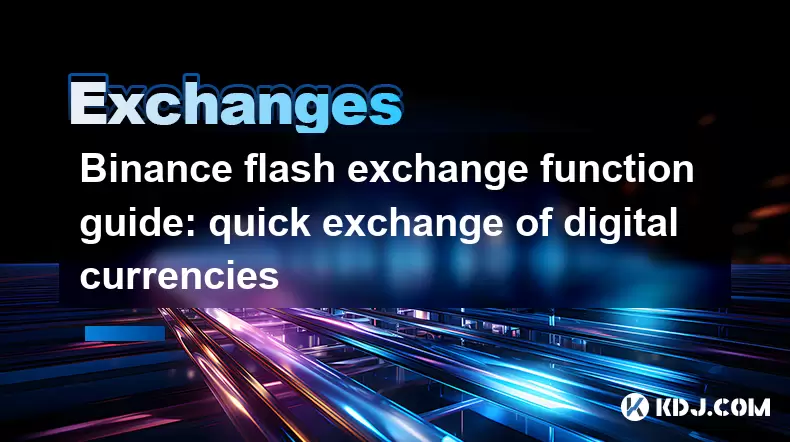
Binance flash exchange function guide: quick exchange of digital currencies
Jun 23,2025 at 12:29pm
What is the Binance Flash Exchange Function?The Binance Flash Exchange function is a powerful tool designed to allow users to instantly swap between supported cryptocurrencies without the need for placing traditional buy/sell orders. This feature simplifies the trading process by offering a direct exchange mechanism, eliminating the requirement to conve...

Binance spot market analysis: seize the best time to buy and sell
Jun 19,2025 at 04:56pm
Understanding the Binance Spot MarketThe Binance spot market is one of the most popular platforms for cryptocurrency trading globally. It allows users to trade digital assets at current market prices, making it essential for traders aiming to buy low and sell high. Unlike futures or margin trading, spot trading involves direct ownership of the asset aft...

Binance fund management secrets: reasonable allocation to increase income
Jun 22,2025 at 02:29pm
Understanding Binance Fund ManagementBinance fund management involves strategic allocation of your cryptocurrency assets to optimize returns while managing risk. The key to successful fund management lies in understanding how different investment options on the Binance platform can be utilized to create a diversified portfolio. This includes spot tradin...

Binance trading pair selection skills: find the best buying and selling combination
Jun 23,2025 at 02:49am
Understanding the Basics of Trading Pairs on BinanceBefore diving into trading pair selection skills, it's essential to understand what a trading pair is. On Binance, a trading pair refers to two cryptocurrencies that can be traded against each other. For example, BTC/USDT means Bitcoin is being traded against Tether. Each trading pair has its own liqui...

Binance new coin mining strategy: participate in Launchpool to earn income
Jun 23,2025 at 11:56am
What is Binance Launchpool and how does it work?Binance Launchpool is a feature introduced by the world’s largest cryptocurrency exchange, Binance, to allow users to earn new tokens through staking. This platform enables users to stake their existing cryptocurrencies (such as BNB, BUSD, or other supported assets) in exchange for newly launched tokens. T...

Binance financial management guide: ways to increase the value of idle assets
Jun 19,2025 at 11:22pm
Understanding Idle Assets in the Cryptocurrency SpaceIn the fast-paced world of cryptocurrency, idle assets refer to digital currencies that are not actively being used for trading, staking, or yield farming. Holding these funds in a wallet without utilizing them means missing out on potential growth opportunities. Binance, as one of the leading platfor...

Binance flash exchange function guide: quick exchange of digital currencies
Jun 23,2025 at 12:29pm
What is the Binance Flash Exchange Function?The Binance Flash Exchange function is a powerful tool designed to allow users to instantly swap between supported cryptocurrencies without the need for placing traditional buy/sell orders. This feature simplifies the trading process by offering a direct exchange mechanism, eliminating the requirement to conve...
See all articles

























































































